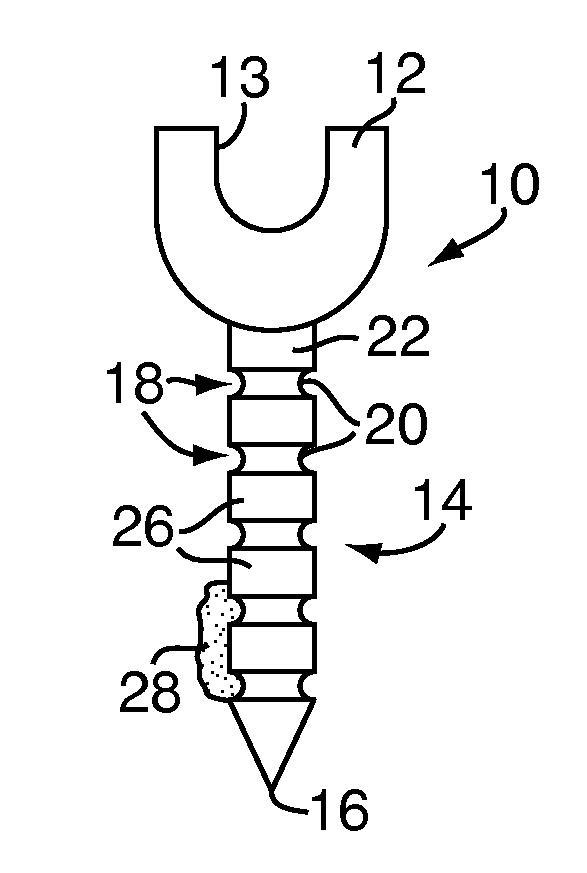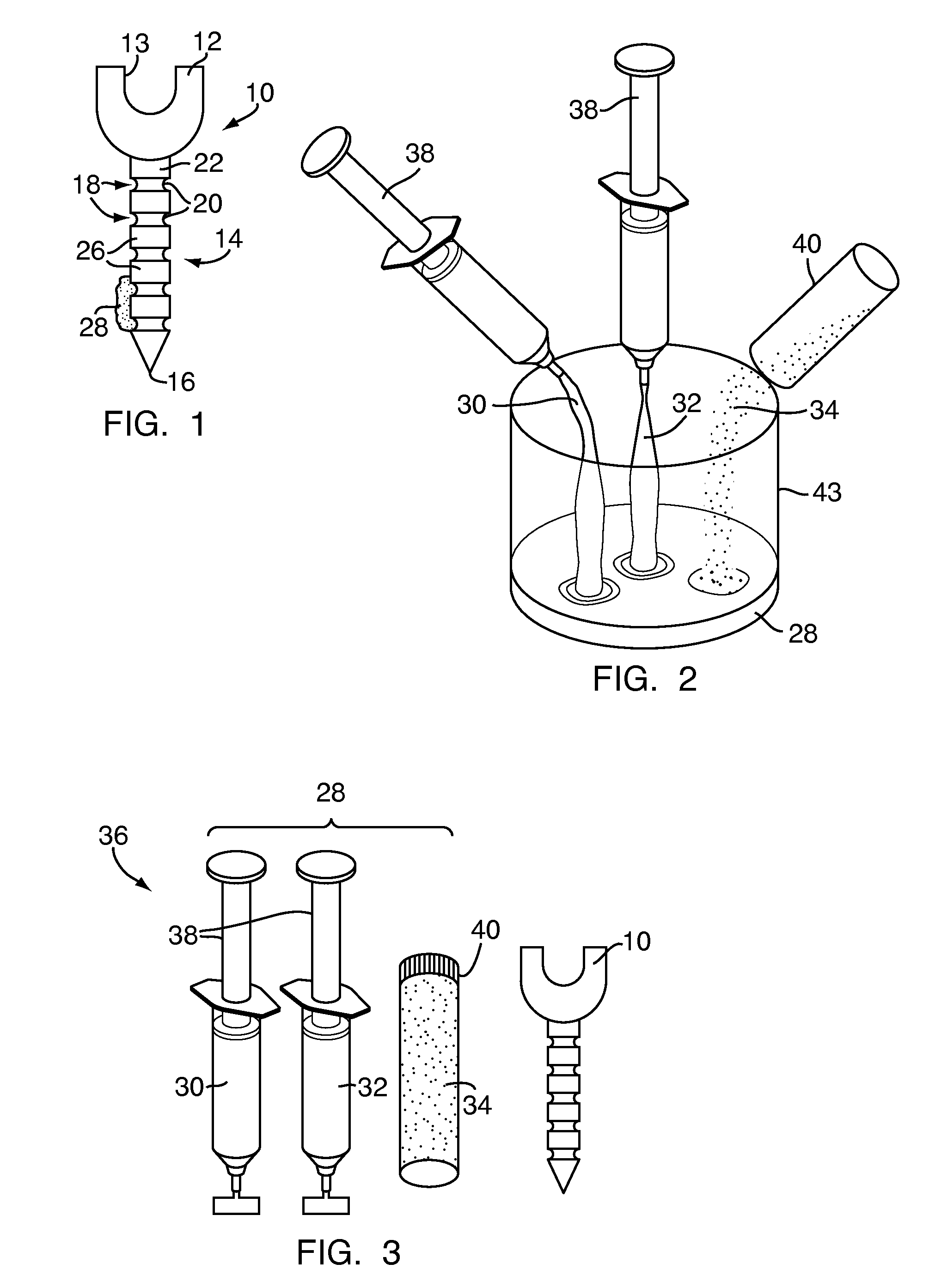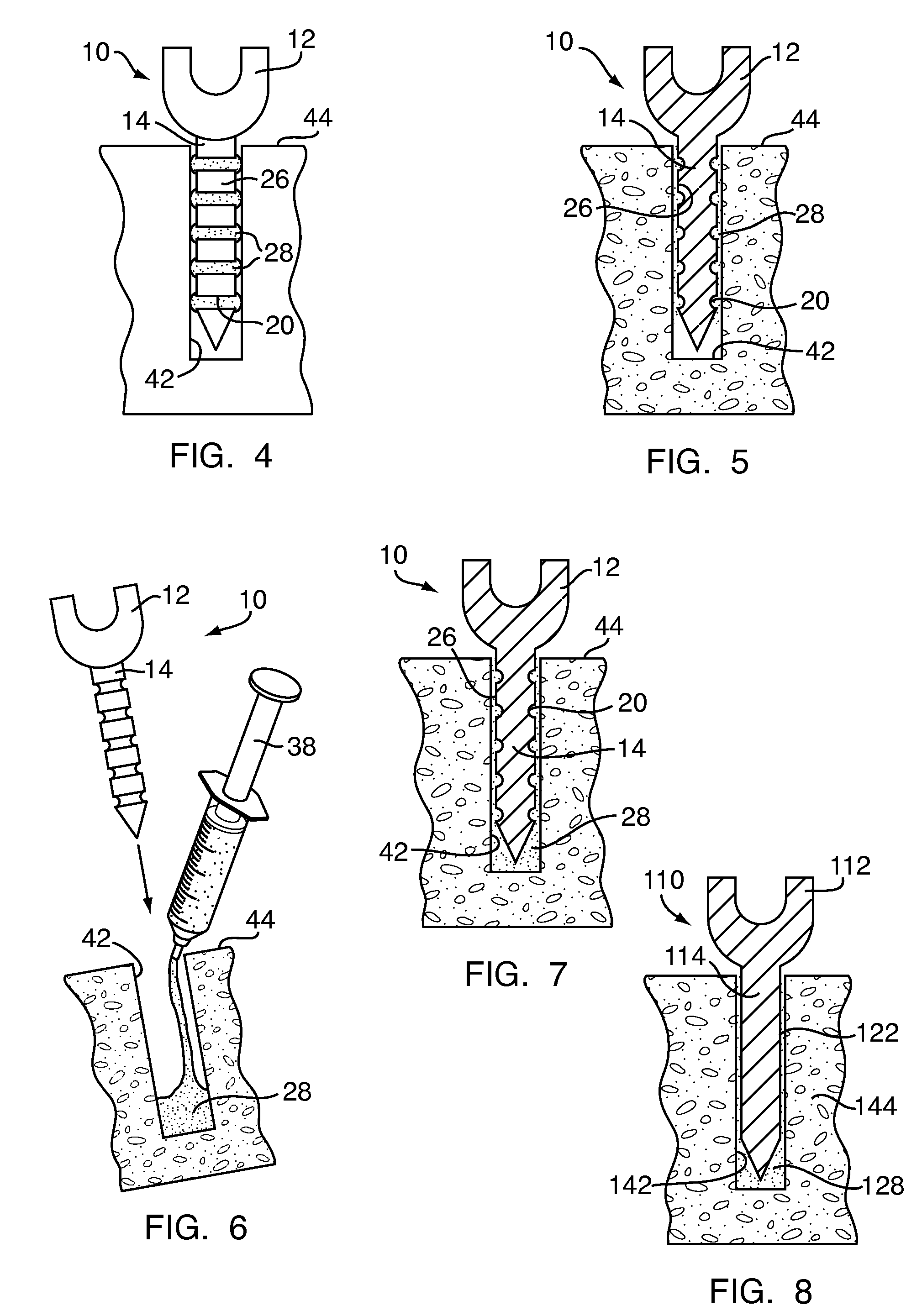Methods and devices for spinal fusion
a spinal fusion and fusion device technology, applied in the field of bone fusion devices, can solve the problems of compromising implant strength, unable to increase the size, loosening and failing of the pedicle screw after installation, etc., and achieve the effect of improving implantation strength and stiffness
- Summary
- Abstract
- Description
- Claims
- Application Information
AI Technical Summary
Benefits of technology
Problems solved by technology
Method used
Image
Examples
Embodiment Construction
[0041]Referring to FIG. 1, a pedicle fastener 10 includes a head 12 and a shank 14 extending outwardly from the head 12 to a shank tip 16. The head 12 may be similar to known pedicle screw heads, including at least one suitable connection feature 13 for rods, plates or the like. The shank 14 has at least one shielding feature 18 formed therein. For example, the shielding features 18 may be a plurality of annular grooves 20 formed in an outer surface 22 of the shank 14 and extending around a circumference thereof. The annular grooves 20 are separated by ridges 26 also extending around the circumference of the shank 14. In some embodiments, the annular grooves 20 and the ridges 26 may include smooth transitions therebetween, providing the outer surface 22 with an undulating sinusoidal-type profile.
[0042]Although shown as a single unit, in some embodiments, the pedicle fastener 10 may be part of a spinal fusion device (not shown) including the pedicle fastener 10, a rod (not shown) and...
PUM
 Login to View More
Login to View More Abstract
Description
Claims
Application Information
 Login to View More
Login to View More - R&D
- Intellectual Property
- Life Sciences
- Materials
- Tech Scout
- Unparalleled Data Quality
- Higher Quality Content
- 60% Fewer Hallucinations
Browse by: Latest US Patents, China's latest patents, Technical Efficacy Thesaurus, Application Domain, Technology Topic, Popular Technical Reports.
© 2025 PatSnap. All rights reserved.Legal|Privacy policy|Modern Slavery Act Transparency Statement|Sitemap|About US| Contact US: help@patsnap.com



